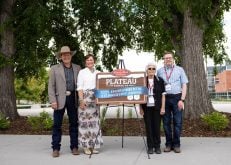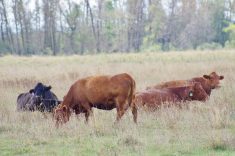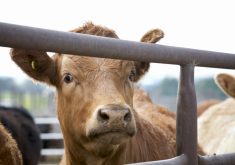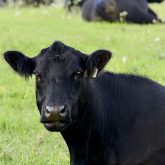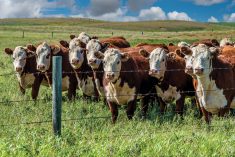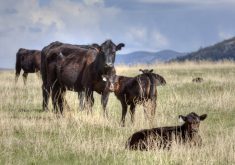Cattleman Leonard Wulf lived by a simple philosophy before he passed away in 2003: “You can get everything in life you want if you help others get what they want.”
That principle still guides his son Jerry as he manages Wulf cattle — one of the largest integrated beef companies in North America.
“As we go through this world, operating in this business that we’re in, we’ve been passionate about looking for win-wins,” the Minnesota producer said at the recent Canfax Cattle Market Forum. “Win-loses aren’t sustainable.”
Read Also

Grazing ‘sweet spot’ boosts pasture performance
Timing-focused approach to pasture management touted to boost forage growth, livestock gains while also cutting farmer labour and inputs
For Wulf, win-wins have been built on two things: information and trust. In the early decades on the family ranch, the Wulfs bought feeder cattle at the sale barn — “most of the time not even knowing where the ranch of origin was.”
As the Wulfs started selling bulls in the 1970s, being able to track their genetics to buy the calves back became critical.
“We got to know those ranchers from selling them bulls, and we bought those calves back from the sale barn,” said Wulf. “As it’s evolved in the last two decades, we’re only buying about 30 per cent at sale barns and the rest are coming direct off the ranch.”
Buying direct has also lessened mortality rates, with the death loss of those cattle about one-third lower than those coming through sale barns, he said.
It’s also boosted efficiency, he added.
“We buy calves over the phone. We know what their calves will do and how they’ll feed. We know how they’ll harvest,” he said. “I can’t speak enough to trust and what it’s worth in the efficiency that’s come.”
Adding value through trust
It also paved the operation’s move into value-added beef.
“It couldn’t happen without being transparent, building trust in those relationships, and sharing information,” he said of his 40,000-head value-added cattle herd.
As the largest supplier of ‘natural’ and non-hormone-treated cattle for Tyson, Wulf nets around $60 more per head on his implant-free cattle and just over $100 more per head on his natural cattle.
“There’s only two ways to improve margins, and that’s either to lower costs or add value,” he said.
“The more connected we become and the more we operate with trust, others up and down the supply chain will become more efficient, and we’ll become better producers in the process.”
The trust Wulf has in his packers has “evolved with grid marketing,” a system that offers premiums and discounts based on carcass quality.
“As long as we were willing to accept the risk of selling cattle on a grid, they had to show us how they were grading,” he said, adding that the process is “very transparent.”
“We flow that information back to the ranch of origin and create the dialogue between us and it about how we can continue to build a better product. As we share that information, it opens the line of communication for some good discussion.”
As major retailers like Loblaws and restaurant chains like McDonald’s shift their focus to ‘sustainable beef,’ Wulf said he sees an opportunity to capitalize on the “new buzzword.”
“I believe we need to start tracking everything and then look at improvements,” he said. “We just need to document that we care about people, we care about our animals, and we’re going to leave the world a better place than we found it.
“There’s always a better way.”



